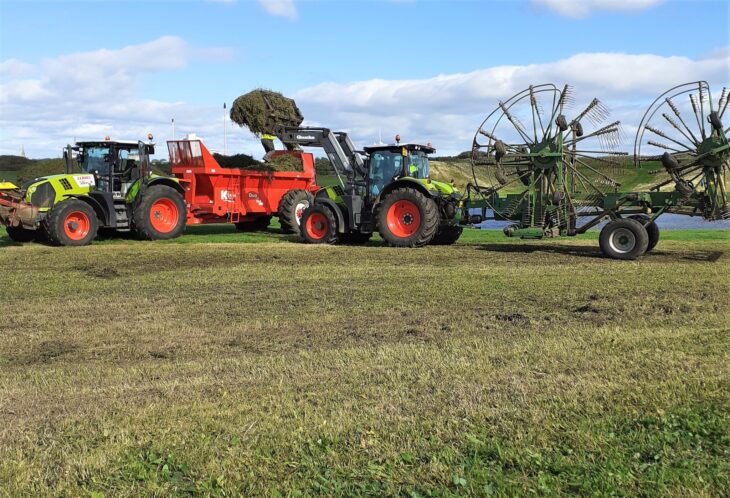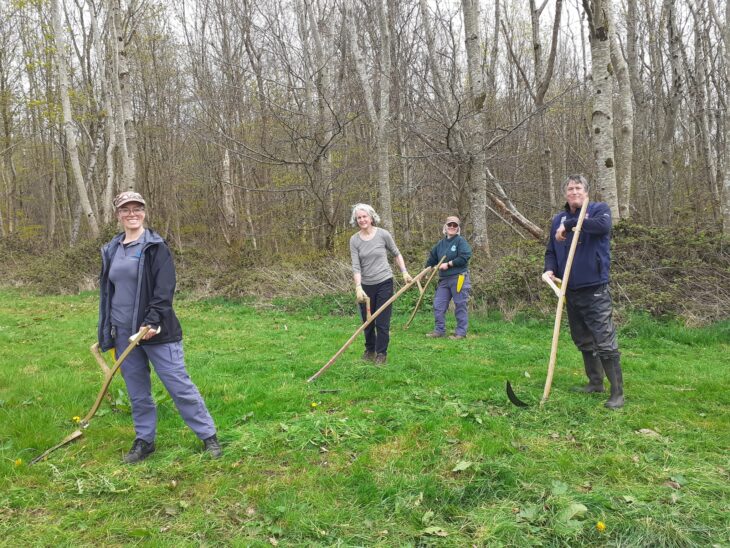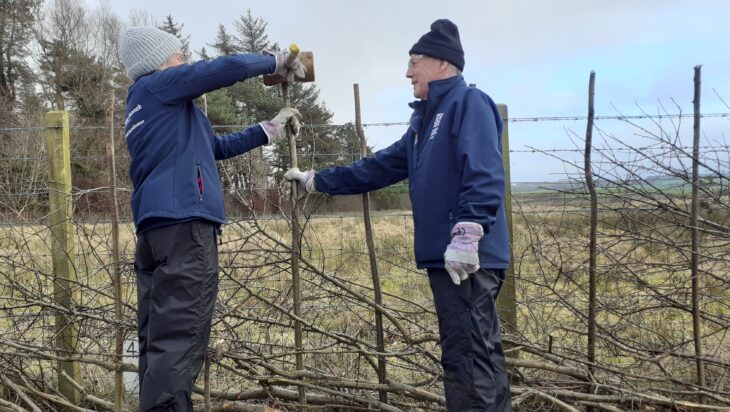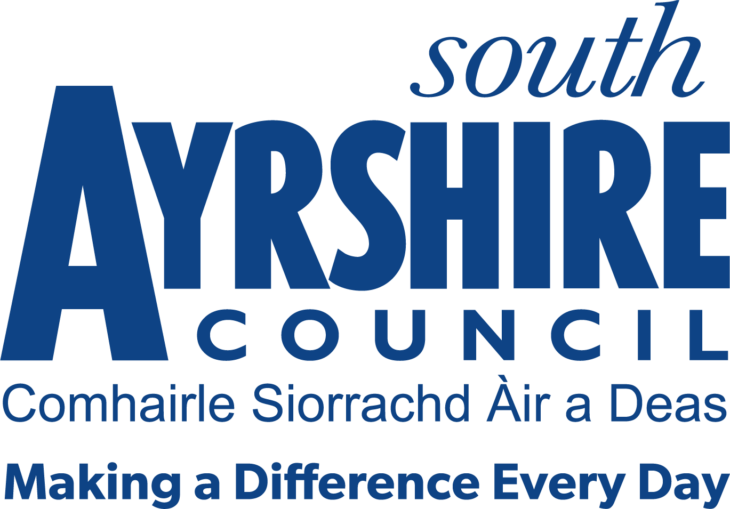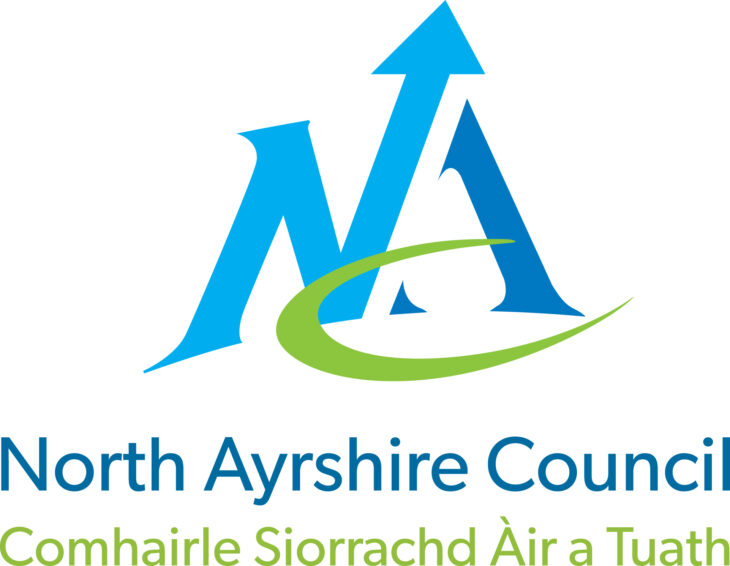How are we helping pollinators?
Below are some of the techniques we are using to create and manage different sites for pollinators.
Green hay
For large scale amenity greenspaces, green hay is a money saving technique to grow, cut and sow wildflower meadows because seeds are expensive to purchase. Meadows are cut once a year rather than continually during the summer months, enabling local authorities to save resources whilst providing a place to feed, breed and rest for wild pollinators. Working with North Ayrshire Council we have pioneered green hay to create new meadows. This is done by gathering the seed laden cuttings and scattering them on carefully prepared new sites.
To date, over 12 hectares of wildflower meadow has been created by the Nectar Network, 8 hectares of which has been created using green hay seed from the original donor meadows.
Read our article on making green hay
Scything
For annually cutting small community meadows, road verges, forest gardens and flowery roughs on golf courses scything is ideal. Cutting these areas with a scythe gives a cleaner finish compared to a strimmer and it is less disruptive to wildlife. Grassy bundles can be left in places to give frogs, toads and moths shelter.
Scything is calming, satisfying and a good work out. Plus, people stop to chat. It is also easier to create a mosaic habitat with short vegetation and some long grassy areas for overwintering bees, moths and butterflies.
We can train partners and volunteers in scything along with providing scythes and work parties to make it a fun day out.
Grazing fields
We have created a special Ayrshire seed mix with native wildflowers to provide a more diverse diet for grazing animals, and pollen and nectar for pollinators.
Working with local farmers we’ve been experimenting with over sowing hayfields and sowing areas of disturbed ground, to encourage wildflower rich grasslands.
Watch a video on species-rich grasslands on farms
Hedge laying
Hedges are important for a wide range of wildlife through-out the year and provide shade and shelter for livestock.
Conservation hedge laying is a simpler and cheaper way to manage hedges by removing less material, this creates a dense, bushy habitat. These wide and tangly hedges are often self-supporting, reducing the need for binders and fewer stakes and producing more shoots and blossom in the Spring, a valuable food source for a range of invertebrates the following Spring.
Watch a video on hedge laying for wildlife
Community action
Gardener’s and community groups have an important role in growing flowers for pollinating insects whether it’s a window box, large garden or community growing space.
Working with community councils and groups, we aim to support more communities taking positive action by planting for pollinators, following our successful pilot with Pollinator Friendly Symington.
Watch our video about Pollinator Friendly Symington


